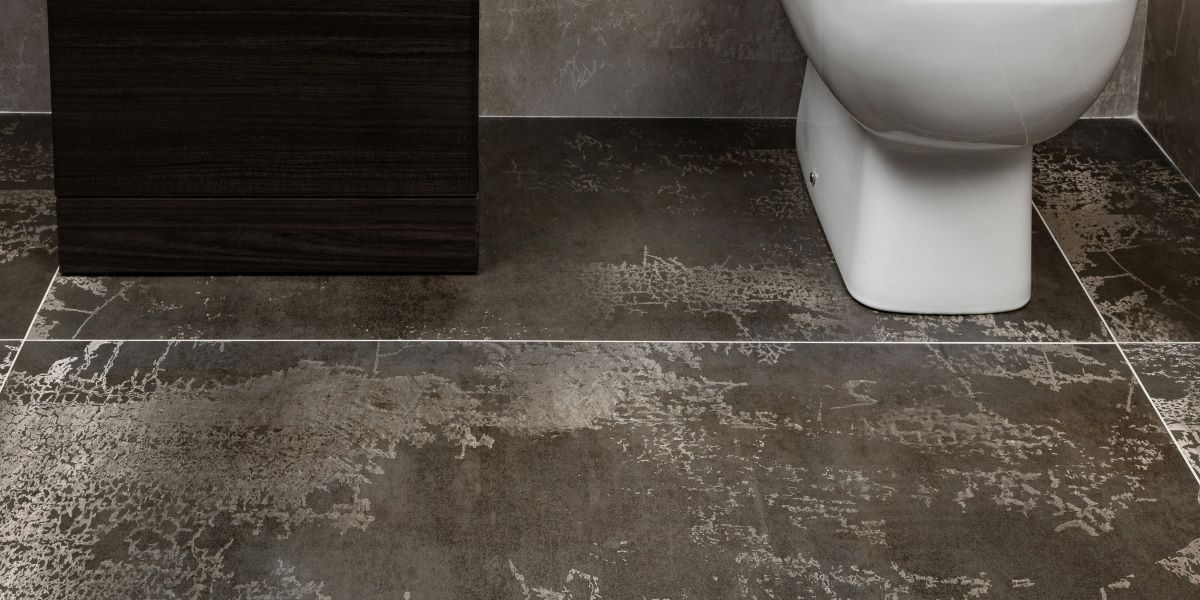Bathrooms are places where moisture and water are the leading causes of wear and tear and damage if they are not provided with suitable flooring environments. Water resistance is essential when selecting flooring for all types of bathrooms to maintain appearance, quality, and functionality.
With many flooring options readily available, tiles remain the first choice mainly for their versatility, longevity, and waterproof nature. This article discusses the importance of water-resistant bathroom flooring and recommends the ideal tiles for homes prone to water spills.
Understanding the Importance of Water-Resistant Flooring
Water-resistant flooring is of great importance for the maintenance of the integrity of the bathroom environment thanks to its high degree of water repellency, which prevents water damage from getting inside. In bathrooms, the presence of water is unavoidable, especially as activities like bathing, showering, and hand washing occur.
Therefore, picking the ideal bathroom floor tile is critical to ensuring it will last longer and be able to withstand conditions necessary for maintaining hygiene. Water-resistant flooring not only enhances the bathroom’s aesthetics, making it visually appealing, but also ensures the safety and comfort of occupants by reducing slip hazards and maintaining a clean, dry area.
Ideal Tile Options for Moisture-Prone Environments
Tiles are favored for their durability, versatility, and ability to maintain quality in humid environments, making them the top choice for waterproof bathroom tile flooring. Many types of tiles are manufactured for use in such places, and they offer several models or styles of tiles to add to your aesthetic preference without being restrained by too much humidity.
Here are some ideal tile options for moisture-prone bathroom environments:
Ceramic Tiles
Ceramic tiles, easily the number one choice for a bathroom floor given their resistance to water, durability, and affordability, are a popular choice. They are produced in several sizes, styles, colors, and prints, which makes it possible to distinguish them from one another and use them to emulate natural materials such as stone or wood. Hence, this is one of the go-to tiles for vinyl floor tiles or bathroom tile.
Porcelain Tiles
Porcelain tiles get an outstanding name because of their remarkable durability and water resistance strength and thus are considered excellent for use in bathrooms and backsplash ideas for kitchens, which usually have moisture problems.
The drywall creation process includes a dense clay material combination that gets fired up in a kiln, finally resulting in a solid surface with porous characteristics, making water repelling easier to do.
Glass Tiles
With completely water-proof bathroom tiles consisting of glass which are visually appealing, windows of bathrooms may be opened. Designed from recycled glass or silica sand, this glass type gives outstanding water resistance, thus, as much as favorable to moisture, stains, and chemical damage, they become immune to them.
With the glass tiles that come in a wide range of colors, shapes, and finishes, which include translucent, frosted, or iridescent options such as choices designers, the creative reflection of light in bathroom spaces can be vivid.
Vinyl Tiles
Here are some ideal tile options for moisture-prone bathroom environments:” Vinyl tiles are produced from a combination of plastic materials such as PVC and then tailor-made with many styles including wood-look, stone-look as well as geometrical patterns. The luxury PVC tiles that include a locking mechanism are very perfect for do-it-yourself installation in places that present water as bathroom vanities.
Installation and Maintenance Considerations
Regardless of the tile type, proper installation and maintenance are essential to extend its lifespan and ensure its waterproofing. For the best results, professional installation by skilled contractors using specialized equipment is recommended to seal, grout, and level the tiles, preventing water infiltration. Besides, regular maintenance actions such as cleaning, sealing, and grouting of grout lines are necessary to cement and protect the tile surface area so that water damage does not spread over time.
Recommended Tile Types for Moisture-Prone Bathroom Environment
Conclusion
Waterproofing is a way to go for the thing that keeps the parity between the efficiency, appearance, and performance of bathrooms. Tiles are the ideal solution thanks to their natural water-repellent capabilities and function as a great design tool for moisture-prone areas. The cost-effectiveness and wide range of design options in tiles make them a popular choice among homeowners and interior designers.
Among ceramic, porcelain, natural stone, glass, and vinyl tiles, you can pick up a variety of items to be appropriate to your own preferences and budget range, while protecting your floor from water damage and any mold growth. One way for homeowners to make beautiful and functioning bathrooms durable by choosing the right tile option and following proper installation and maintenance procedures over the years.
FAQs
Which tiles are recommended for use in distinctively humid areas like bathrooms?
Among the materials suitable for bathrooms are ceramics, porcelain plumbing, natural stone, glass, and vinyl tiles because of their water resistance, and ability to be durable and resistant to water, as well as their flexibility in design.
Are natural stone tiles with a high level of perviousness desirable for bathroom floor installations?
Yes, straight natural stone tiles may also be used in bathrooms if they have been sealed to protect them from water absorption. A sealant on the tiles helps to improve their waterproofing property and durability in moisture locations.
What features should be given the most attention to ensure that water can’t get into bathrooms?
It is recommended to carry out professional installation to ensure the tiles are sealed, grouted, and leveled to prevent water from getting underneath.
Published by: Martin De Juan


















